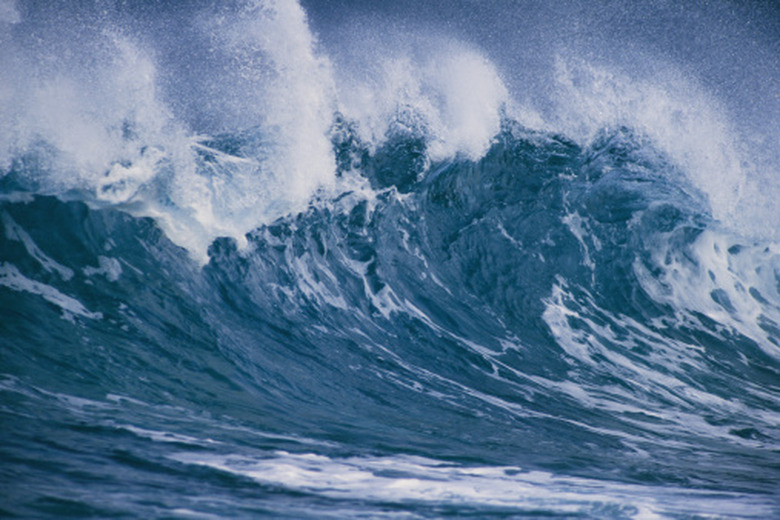The Effects Of Cyclones On The Environment
A cyclone is a spinning storm caused by a low-pressure area in the atmosphere. The air in a cyclone turns counterclockwise in the Northern Hemisphere and clockwise in the Southern Hemisphere. Tropical cyclones develop over tropical or subtropical waters. These large weather systems have different names in different parts of the world, but are most commonly known as typhoons or hurricanes. Cyclones are classified according to their wind speed, ranging from 74 to more than 156 miles per hour. Tropical cyclones often cause environmental changes far beyond the area where they make landfall.
Winds
Winds
The winds from a Category 1 cyclone cause minimal damage to shrubbery and trees. Category 5 storms are the most forceful, bringing winds of more than 156 miles per hour. Winds this fast can rip trees from the ground and flatten buildings. Cyclones that fall in between cause varying degrees of destruction, including tearing branches from trees and destroying vegetation. This often results in loss of animal habitats, interrupting and changing ecosystems. Flying debris from any of these windstorms can kill people or animals. Cyclonic winds also can damage infrastructure, such as power lines, communication towers, bridges and roads.
Flooding
Flooding
Cyclones can produce flooding in two ways. First, tropical cyclones frequently cause a surge in ocean waters causing sea levels to rise above normal. These surges, sometimes called tidal waves, can drown people and animals, and are often the greatest killers in a cyclone. Cyclones also can bring torrential rains that lead to flooding.
Whatever the cause, overflowing waters can damage buildings and infrastructure in coastal areas. In addition, they can destroy vegetation and flow into estuaries, damaging the plant and animal communities that live there.
Erosion
Erosion
A cyclone's high winds can erode the soil, thereby damaging existing vegetation and ecosystems. This erosion leaves the area exposed and prone to even more wind erosion. Soil and sand that is blown into other areas can damage the vegetation there.
Erosion also can be caused by storm surges from tropical cyclones. Waves that reach far onto a beach drag the sand back into the ocean, leaving the affected area highly eroded. This can damage beach and dune ecosystems as well as structures. The sea will eventually bring the sand back to the beach, but this can take years.
Storm Churn
Storm Churn
Storm churn happens when a cyclone's winds churn up cold water as it moves across the ocean. This churning lowers the water temperatures after the storm has passed, squelching the formation of new storms.
Storm churn also invigorates the ocean current that moves warm water from tropical oceans to the poles and cold water from the poles to the tropics. Michael Huber of Purdue University believes that storm churn will continue cooling the ocean's surface temperatures for several hundred years, countering fears that global warming will lead to an increase in the strength, quantity and length of future tropical cyclones.
Cite This Article
MLA
Gonzales, Derek. "The Effects Of Cyclones On The Environment" sciencing.com, https://www.sciencing.com/effects-cyclones-environment-8667447/. 24 April 2018.
APA
Gonzales, Derek. (2018, April 24). The Effects Of Cyclones On The Environment. sciencing.com. Retrieved from https://www.sciencing.com/effects-cyclones-environment-8667447/
Chicago
Gonzales, Derek. The Effects Of Cyclones On The Environment last modified August 30, 2022. https://www.sciencing.com/effects-cyclones-environment-8667447/

